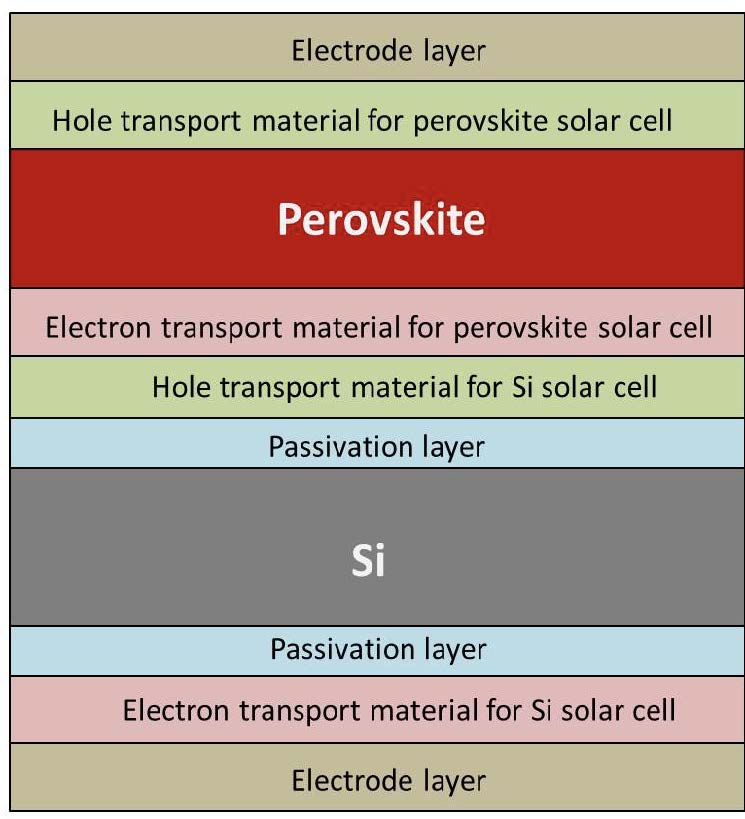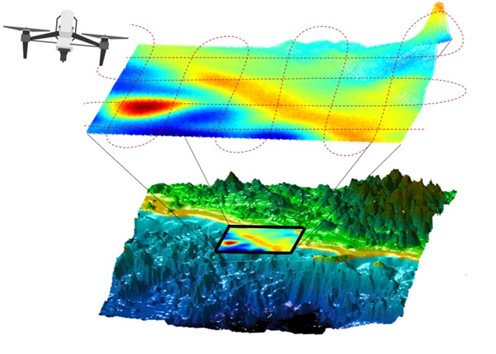Technology licensing
At The Australian National University, our researchers are continually developing innovative solutions to real-world problems.
Give your organisation a commercial edge and help our research achieve the greatest possible economic and societal impact by licensing ground-breaking technologies from ANU.
We invite you to browse our available technologies below. If you are interested in working with ANU to license or further develop any of our technologies, please get in touch.
Research areas

Physical Sciences
- TT2019-025 Real Time Aberration Correction in Laser Scanning Systems
- TT2020-039 Silicon Perovskite tandem photovoltaic cell incorporating dopant-free Si cell
- TT2021-022 Silicon-Perovskite tandem photovoltaic cell with double-side poly-Si/SiO2 passivating contact Si cell
- TT2021-017 Artificial intelligence for multi-parameter optimisation of manufacturing procedures
- TT2021-020 Novel process of extracting rare earth elements from phosphate ores
- TT2022-006 Fabrication and delamination of multilayer dielectric foil
- TT2022-008 Plug & Play Computational 4D Single Objective Lightsheet
- TT2022-014 Method for producing Dimethoxymethane and green Hydrogen from Methanol
- TT2018-024 Virtual Reality Simulations for Physics and STEM Education
- TT2021-005 A device for concentration of electromagnetic radiation
- TT2022-001 Learning to Detect smoke from bushfires with uncertainty using a transmission-based pairwise term
- TT2022-015 Compostable plastic from coffee waste
- TT2022-023 Optical satellite communication ground station network
- TT2022-022 Gryo-magnetometer for Inertial Navigation Systems
- TT2023-001(I) Direct Differential Phase Recovery for Optical Sensors
- TT2023-001 (II) Time Differential Phase Recovery for Optical and RF phase measurement
- TT2022-026 MiniGrav: Drone Deployable Miniturised Absolute Gravimeter

Life Sciences
- TT2018-016 Age-Related Macular Degeneration (AMD) Therapies
- TT2021-026 Artificial Intelligence for designing mRNAs with high translational power
- TT2021-021 Detection of RNA modifications at a single molecule-level with nanopore sequencing
- TT2018-011 Efficient and cost-effective method for cell-free protein synthesis
- TT2019-001 Superfast haemostat: Non-oxidised cellulose nanofiber based topical haemostatic agent
- TT2021-019 Trojan Horse Drug Delivery: for treatment of parasitic infections
TT2020-019 Lipid Bound Iodine - Antimicrobial Resistance Minimising Solution
- TT2022-011 Non-invasive ketone sensor for Diabetic Ketoacidosis
- TT2019-056 Engineered plant membrane proteins to selectively concentrate elements from water
- TT2022-033 Versatile and Scalable Methods for Fabricating Solid State Membranes and Nanopores
- TT2011-027 & TT2013-035 Root Architecture Regulator (RAR) – Key to Modulating Root Architecture for Thriving Plants

Social + Behavioural Sciences
Search our opportunities
Engineered plant membrane proteins to selectively concentrate elements from water
Remediation of mine sites or other waste water facilities can cost 100’s of millions to clean, with little or no added value. ANU start-up, MTE, develops p…
Root Architecture Regulator (RAR) – Key to Modulating Root Architecture for Thriving Plants
The success of the Green Revolution can be attributed to customized crop varieties with modified growth parameters, addressing diverse agro-ecological challenge…
TT2017-003 PostAc® great research jobs outside academia
What is PostAc®? The matching between higher degree research graduates and their potential non-academic employers is poor. Many research graduates have little…
TT2018-011 Efficient and cost-effective method for cell-free protein synthesis
Recombinant protein production is prevalent in two systems; an in-vivo (living) or in-vitro (non-living) system. Oftentimes, Escherichia coli (E. coli) is used…
TT2018-016 Age-Related Macular Degeneration (AMD) Therapies
AMD is the leading cause of blindness in the developed world predicted to affect 288 million people worldwide by 2040. The more common form, atrophic AMD, accou…
TT2018-024 Virtual Reality Simulations for Physics and STEM Education
Learning in STEM disciplines often requires imagining abstract concepts such as electric fields and force fields, and correcting misconceptions arising from a s…
TT2019-001 Superfast haemostat: Non-oxidised cellulose nanofiber based topical haemostatic agent
Haemorrhage or severe blood loss leads to approximately 2 million deaths every year globally (Healthline.com 2018). Various solutions are available to clinician…
TT2019-025 Real Time Aberration Correction in Laser Scanning Systems
This technology is an adaptive optics solution for laser scanning systems that provides rapid removal of up to 50 aberrations across the field of view in millis…
TT2020-019 Lipid Bound Iodine - Antimicrobial Resistance Minimising Solution
Infections cause a significant economic and social burden to be placed on society. Treatments for infections, where available, are typically specific for…
TT2020-039 Silicon Perovskite tandem photovoltaic cell incorporating dopant-free Si cell
Silicon solar cells are fast approaching their theoretical efficiency limit of ~30%. To meet increasing demand for renewable energy, and stay competitive, the s…
TT2021-005 A device for concentration of electromagnetic radiation
Heliostats concentrate solar radiation reflecting from curved mirror panels spread over a large area of land into a central thermal receiver to provide carbon-f…
TT2021-017 Artificial intelligence for multi-parameter optimisation of manufacturing procedures
Current global optimisation techniques involve three main approaches, (i) gradient based approaches, (ii) stochastic approaches and (iii) model-based approaches…
TT2021-019 Trojan Horse Drug Delivery: for treatment of parasitic infections
Parasitic infections and related diseases affect millions of people, livestock and companion animals globally. Platyhelminthes and Apicomplexan protozoa are two…
TT2021-020 Novel process of extracting rare earth elements from phosphate ores
The rare earth elements (REE) are "critical metals" due to their use in modern electronic devices (phones, plasma screens) and green technologies (batteries, wi…
TT2021-021 Detection of RNA modifications at a single molecule-level with nanopore sequencing
RNA modifications are known to perform many critical functions in gene expression. Current RNA sequencing technologies produce a stream of signals that can be d…
TT2021-022 Silicon-Perovskite tandem photovoltaic cell with double-side poly-Si/SiO2 passivating contact Si cell
Silicon solar cells are fast approaching their theoretical efficiency limit of ~30%. To meet increasing demand for renewable energy, and stay competitive, the s…
TT2021-026 Artificial Intelligence for designing mRNAs with high translational power
The translation of mRNA into proteins is the most important indicator of a cell's response to environmental stressors, infections and diseases. Current methods…
TT2022-001 Learning to Detect smoke from bushfires with uncertainty using a transmission-based pairwise term
The 2019-20 Australian Bushfires have had an estimated cost of $103B, the 2020 California wildfires an impact of $12B and the 2019 Amazon wildfires are estimate…
TT2022-006 Fabrication and delamination of multilayer dielectric foil
The invention is a method for fabrication and large-scale delamination of dielectric foil consisting of many layers. Researchers at ANU have developed a process…
TT2022-008 Plug & Play Computational 4D Single Objective Lightsheet
High throughout organoid imaging with single cell resolution has played a critical role towards drug discovery and advancing medical research. Existing high-thr…
TT2022-011 Non-invasive ketone sensor for Diabetic Ketoacidosis
Diabetic ketoacidosis (DKA) is the most common hyperglycaemic emergency and causes the greatest risk of death in patients with diabetes mellitus. The complicati…
TT2022-014 Method for producing Dimethoxymethane and green Hydrogen from Methanol
With the current climate crisis, opportunities exist to make all industrial processes greener. Researchers from The ANU have developed a catalyst that uses sunl…
TT2022-015 Compostable plastic from coffee waste
Spent coffee grounds (SCGs) are a grossly undervalued waste product from an industrial and commercial perspective. Researchers at The Australian National Univer…
TT2022-022 Gryo-magnetometer for Inertial Navigation Systems
The Quantum Magnetometer Market is expected to grow to US$700 million by 2025 (Research and Markets) driven by compelling value propositions in medicine, milita…
TT2022-023 Optical satellite communication ground station network
Optical communication to satellites has the potential to offer much higher speed communication with enhanced security over current radio-frequency systems. Opti…
TT2022-026 MiniGrav: Drone Deployable Miniturised Absolute Gravimeter
Determining local gravity has significant relevance in various applications, including hydrology, volcanology, mineral surveying, and subsurface mapping, where…
TT2023-001 (II) Time Differential Phase Recovery for Optical and RF phase measurement
Time Differential Phase Recovery (TDPR) is a real-time phase measurement algorithm designed for extracting useable phase measurements from RF signals, aimed at…
TT2023-001(I) Direct Differential Phase Recovery for Optical Sensors
Direct Differential Phase Recovery (DDPR) is a real-time phase measurement algorithm for the measurement of phase differences between two optical interferometri…
Versatile and Scalable Methods for Fabricating Solid State Membranes and Nanopores
In recent years, nanopore technology has become increasingly important in the field of life science and biomedical research. Development of highly scalable, fle…
Related websites
Contact
- Innovation ANU
- Send email




























